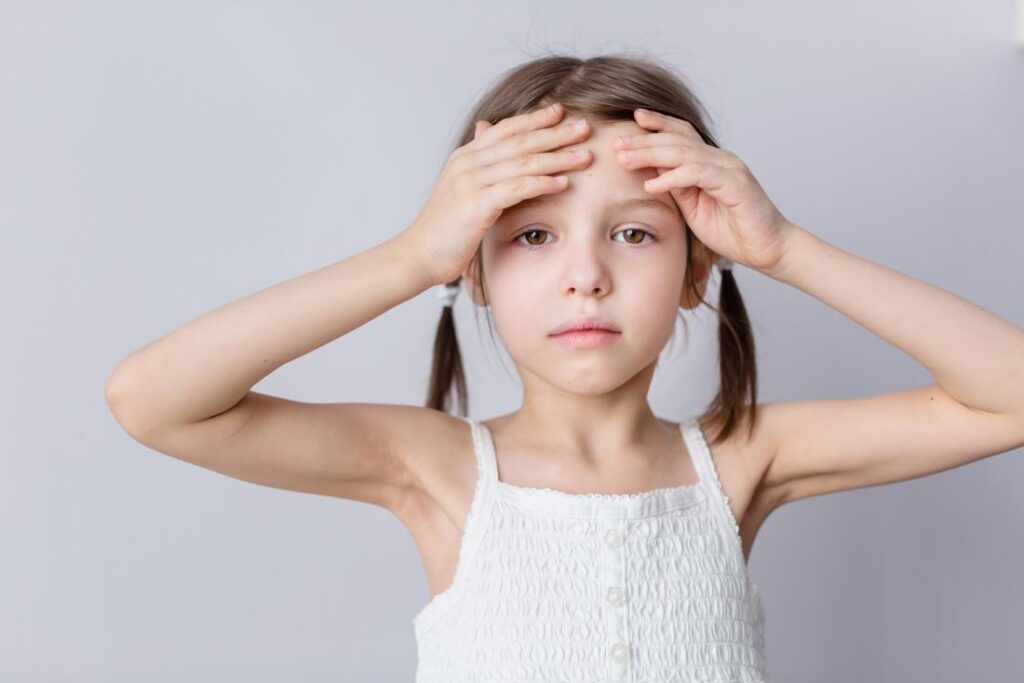A brain injury can affect a child’s development and overall well-being. Understanding the potential causes and recognizing the signs are the first steps for parents and caregivers to take. Any suspected head injury warrants prompt evaluation by a medical professional.
What Causes a Brain Injury?
A brain injury in a child can result from various events that cause trauma to the head. Falls are a frequent cause. Everyday activities, from tumbling off furniture to playground accidents, can lead to head impacts.
Sports-related incidents are another common source of injury for school-aged children and adolescents. Contact sports, such as football and soccer, along with activities like bicycling or skateboarding, carry a risk of collision or falls that can impact the brain. Vehicle collisions, even at low speeds, can generate enough force to cause significant head trauma.
Very young children and infants face unique risks. They are unable to communicate their symptoms verbally. This inability to describe pain or other feelings means caregivers must be observant of any changes in behavior or physical signs following a bump or jolt to the head. An injury might occur from an accidental drop or a sudden stop while in a carrier.
What Are the Symptoms?
The symptoms of a brain injury can vary widely depending on the nature of the impact. It is useful to distinguish between signs that may appear with milder injuries and those that suggest a more serious situation. Following a minor bump to the head, a child might experience:
- A persistent or worsening headache
- Dizziness or a feeling of being off-balance
- Nausea
- Changes in feeding or nursing habits
- Disruptions to sleep patterns
- Persistent, inconsolable crying
- Increased irritability or fussiness
- A noticeable loss of interest in favorite toys or activities
Certain symptoms indicate a need for immediate medical evaluation. These include:
- Slurred speech or difficulty speaking
- Seizures, which may involve convulsions or staring spells
- The appearance of clear fluid draining from the nose or ears
A child who loses consciousness, even for a moment, or who shows profound confusion and disorientation should be assessed by a healthcare provider without delay.
How Are They Treated?
The approach to managing a brain injury is determined by its severity, as identified through a professional medical evaluation. Treatment pathways are individualized for each child’s specific circumstances. For mild injuries, a healthcare provider may recommend a period of rest. This may involve limiting activities like sports, screen time, and demanding schoolwork to allow the brain time to recover. The provider will give specific guidance on gradually reintroducing activities while monitoring for any return of symptoms.
Moderate to severe injuries require more intensive management under the supervision of specialists. A medical team may use prescription medications to manage symptoms such as seizures or increased pressure within the skull. Rehabilitation services can be a component of the care plan. In some cases, a neurosurgeon may perform a procedure to address physical damage to the brain or skull.
Seek Professional Neurology Services
A timely and thorough evaluation is fundamental after any suspected brain injury. A pediatric neurologist has the expertise to perform a comprehensive assessment, reach a diagnosis, and develop an appropriate management plan. Early evaluation helps families understand the extent of an injury and what to expect during the recovery process. If you have any concerns about your child’s health after a head impact, contacting a qualified medical professional is a direct way to get the answers and support you need.


